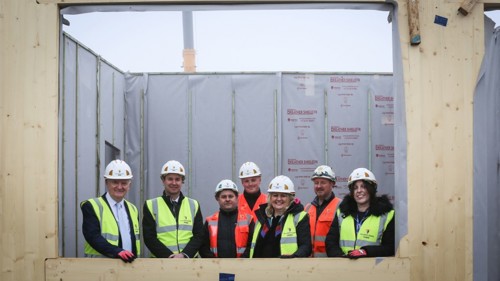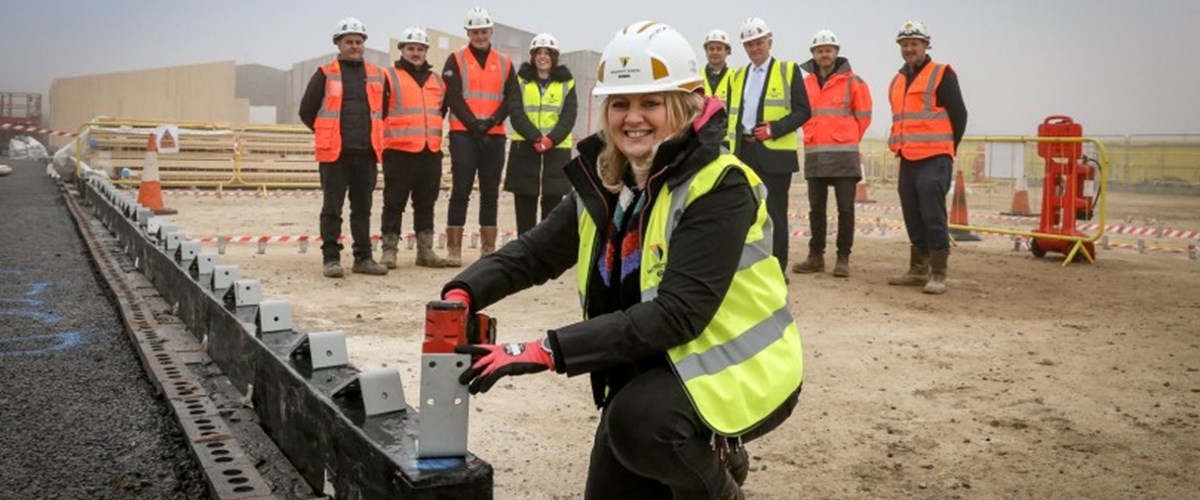Having built numerous schools in Leicestershire for over 20 years, the Willmott Dixon Midlands team are onsite creating Leicestershire’s first net-zero in operation school for Leicestershire County Council. This school design will then act as a template for future schools in the region.
The 210-place school, located on Normandy Way, is being created to meet the needs of new housing developments in the area and was procured through our Major Projects Framework.
Incorporating sustainable solutions
The new school is playing a key role in the council’s plan to become a net-zero carbon county by 2045, so sustainability is a core focus of this project.
The new building will take a fabric-first approach, using materials with a low U-value that will enhance the building’s thermal efficiency – such as enhanced fabric walls, floors and roof as well as enhanced performance windows. This approach will help to maximise air tightness, reducing the impact of external temperatures and keeping the building at an ambient temperature. When the building is in operation, this will help to reduce heating and cooling costs.
Willmott Dixon will also be making use of a cross-laminated, prefabricated timber frame, which will help to reduce embodied carbon emissions when compared to a traditional steel frame. By manufacturing the frame offsite, the projected programme for the timber frame erection will be halved compared to more traditional methods.
Finally, a 381m2 photovoltaic array will power the building and electric vehicle charging points will be included.
Informing the design through advanced modelling
Achieving net-zero in operation across both regulated and unregulated energy sources is a critical part of this project.
Our team have used advanced modelling, through Energy Synergy™, to help inform the design of the building. Using this modelling has enabled our team to interrogate how changes to the design will positively or negatively impact on the sustainability of the building. In turn, this has allowed key stakeholders at the council to make informed decisions about the project to get the best building for their aspirations and needs.
This modelling played a key part in establishing the size of the PV array required to power the building for both regulated and unregulated energy sources.

Council representatives visited the site to celebrate work starting
Click here for more information on the Major Projects Framework.

